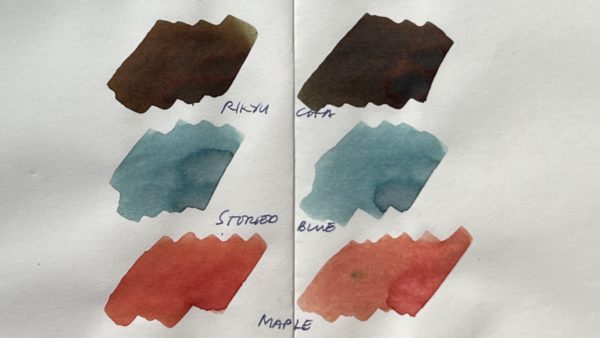I found this in a 7-storey bookstore on Fuzhou Road. On the third floor, I passed beneath an arch bedecked with flashing lights and neon Stabilo stickers to enter the pen section. The salesladies had no English and I had no Mandarin, so we invented sign language for “No, not the rollerball, the fountain pen!” on the spot.
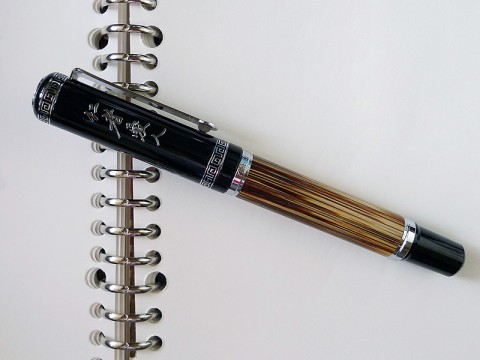
Chinese scrollwork decorates the cap. Chinese characters are engraved on one side, and an image of Confucius on the other.
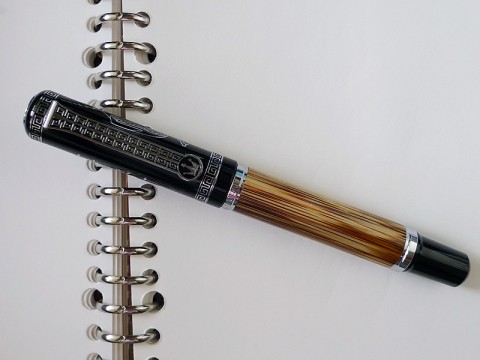
More scrollwork decorates the clip, which ends in a crown logo. (Do not think Krone thoughts at this point.) (King Crown makes Duke pens, I think.) The body looks like bamboo. I’m still trying to figure out how this was done. Bamboo laminate over brass?
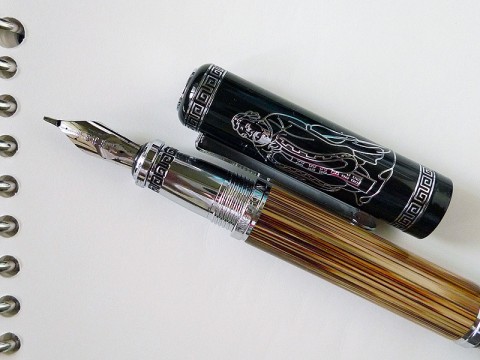
More scrollwork near the collar, and the ubiquitous threaded metal section. The nib is where the pen becomes more interesting.
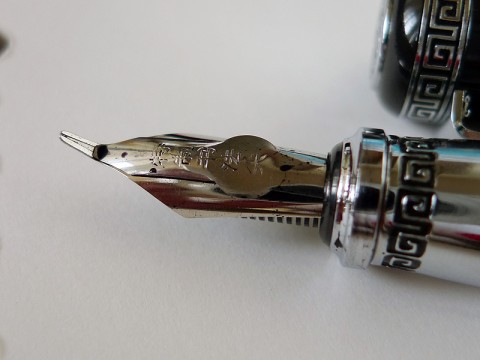
The nib is bent upwards, as is typical with Chinese calligraphy pens. What struck me when I first held the pen was the length of the bent portion – it’s almost 4 mm. The next thing I noticed was the overfeed. The only other modern pen I know of with an overfeed would be Sailor’s Nagahara Emperor series. The overfeed collects more ink and drives it to the nib.
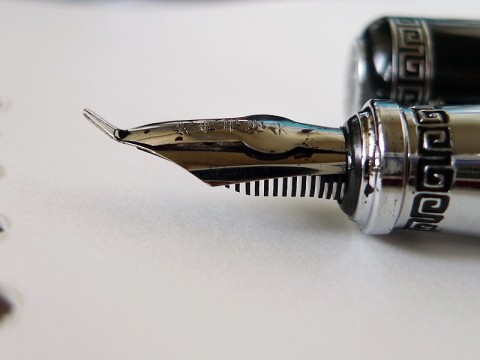
Does it work? Yes, it does.
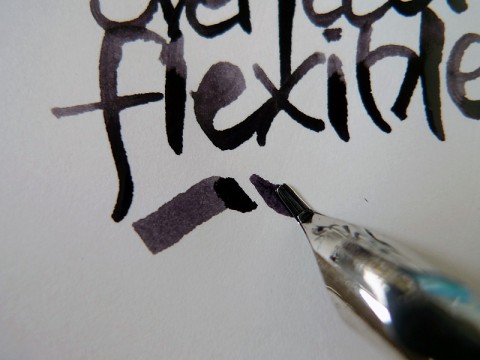
The bent nib also flexes (!).

The nib writes a fine, consistent line when used upside down. Varying pressure within a stroke does produce a brush-like impression.

I enjoy it for writing, but much more so for drawing. Duke Ink (24 RMB a bottle) produces both deep and light grays, and is a good match for the pen.


